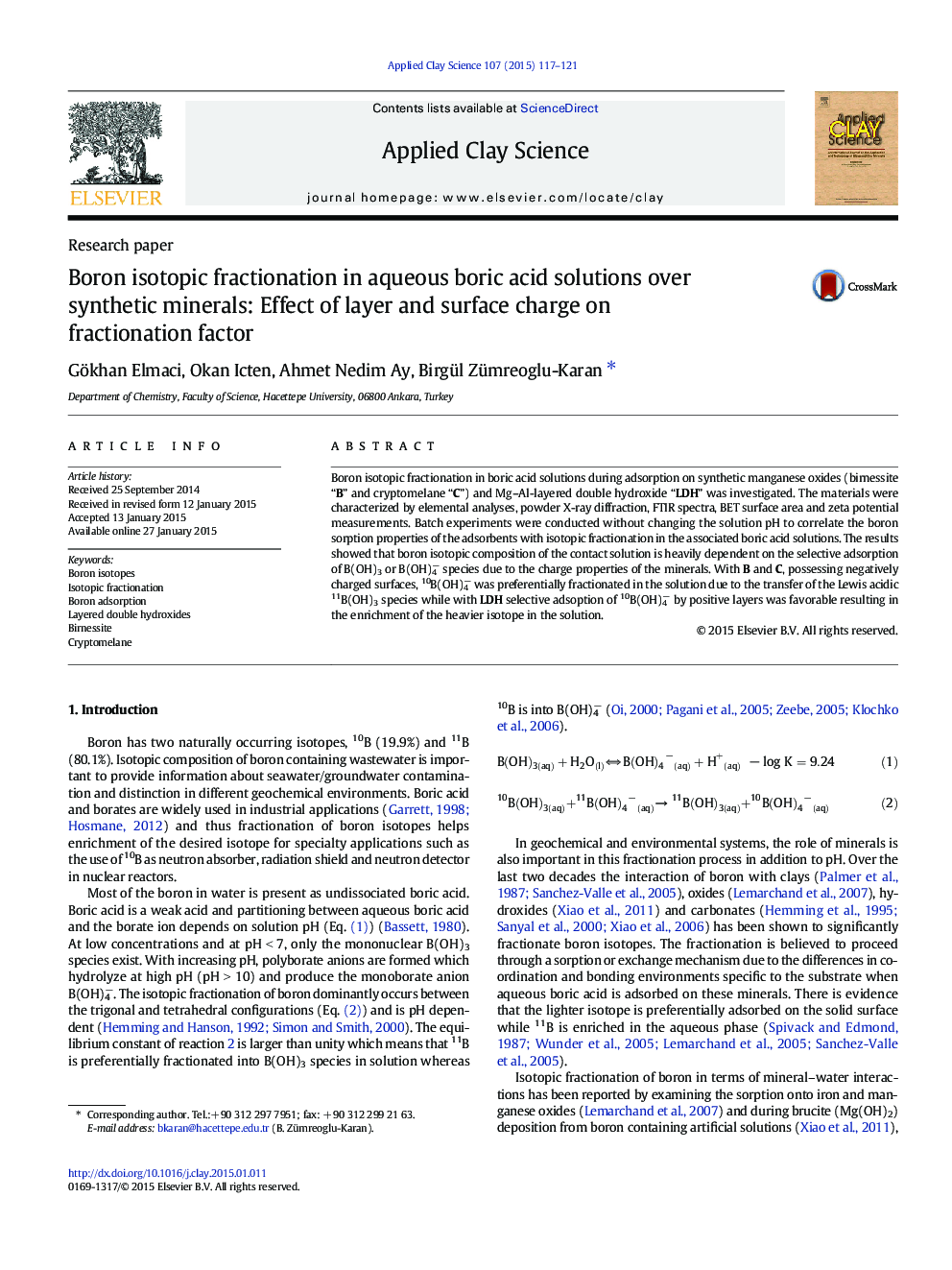| Article ID | Journal | Published Year | Pages | File Type |
|---|---|---|---|---|
| 1694535 | Applied Clay Science | 2015 | 5 Pages |
•Boron isotopes in boric acid solutions fractionate during boron adsorption by minerals.•Synthetic birnessite (B), cryptomelane (C) and layered double hydroxide (LDH) can fractionate boron isotopes.•Surface charge employs a predominant factor on fractionation factor.•Lighter isotope is fractionated by negatively charged B and C layers/surfaces via selective adsorption of 11B(OH)3.•Heavier isotope is fractionated by positively charged LDH layers via selective adsorption of 10B(OH)4−.
Boron isotopic fractionation in boric acid solutions during adsorption on synthetic manganese oxides (birnessite “B” and cryptomelane “C”) and Mg–Al-layered double hydroxide “LDH” was investigated. The materials were characterized by elemental analyses, powder X-ray diffraction, FTIR spectra, BET surface area and zeta potential measurements. Batch experiments were conducted without changing the solution pH to correlate the boron sorption properties of the adsorbents with isotopic fractionation in the associated boric acid solutions. The results showed that boron isotopic composition of the contact solution is heavily dependent on the selective adsorption of B(OH)3 or B(OH)4− species due to the charge properties of the minerals. With B and C, possessing negatively charged surfaces, 10B(OH)4− was preferentially fractionated in the solution due to the transfer of the Lewis acidic 11B(OH)3 species while with LDH selective adsoption of 10B(OH)4− by positive layers was favorable resulting in the enrichment of the heavier isotope in the solution.
